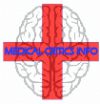MRI Soft computing
Book“Soft-computing techniques for MR Image Analysis” ISBN: 978-3-639-18620-8;Mehta S. B. Etl.
A Soft-Segmentation Visualization Scheme for Magnetic Resonance images”Magnetic Resonance Imaging, Elsevier; 23(2005) 817-828; Mehta S. B. Etl. Link
Handcrafted Fuzzy Rules for Tissue classification”; Magnetic Resonance Imaging, Elseier 26 (2008) 815-823; Mehta S. B. Etl. Link
MRI Knowledge Hub
What is soft-computing
Soft computing technique deals with partial truth or decision making with imprecision and uncertainty. These techniques use “Fuzzy logic“, “Neural network” and “Genetic algorithm”, which play an important role in developing Image processing technique.
Why Soft-Computing
An image visualization or segmentation tool for diagnostic use can shorten the time required for diagnosis, improve diagnostic accuracy and increase the diagnosis throughput of the doctor. Identifying different types of tissues in the MR image is the most challenging problem for interpretation and diagnosis. Difficulties in the 2D MR image based identification of different tissues arise due to:
- Partial volume averaging: more than one type of tissue can lie within finite spatial extent of an imaging system’s point spread function;
- Tissue inhomogeneity and non-uniformity which leads to fuzziness at the boundary regardless of the imaging system’s quality;
- Variability in tissue types;
- Imaging variabilities.
Soft-Computing based interactive segmentation based visualization tool or fuzzy based crisp segmentation tool can enable a user to circumvent these difficulties with the help of his anatomical knowledge and experience.
Soft-computing Applications on MR Images
- Interactive Visualization
- Soft-segmentation
- Crisp Segmentation
- Generating Fuzzy rules
Interactive Visualization
A neuro-fuzzy interactive visualization scheme generates probable pixel partitions from the histogram of MR image data using a connectionist approach and then generates a selective visual depiction of pixel partitions using pseudo-color on the basis of an appropriate fuzzy membership function.
Soft-Segmentation in MR images
Soft segmentation. Soft segmentation is decomposing an image into two or more segments where each pixel may belong partially to more than one segment. This display scheme will help the radiologists in analyzing the tissue boundaries between different tissue types, between healthy tissues and diseased tissues, and within diseased areas (for example within tumor area to analyze boundaries between tumor, edema, necrosis or scar tissue).
Fuzzy Rule Based segmentation and Generating Rule set
Fuzzy rule based system using a combination of histogram and spatial neighborhood based features for segmentation and identification different tissue types in the MR image of brains. Variation of features from one type of tissue to another is gradual at the boundaries due to the inherent nature of the MR signal (MR physics). So fuzzy rule based approach is expected to better handle these variations and variability in features corresponding to different types of tissue.
Genetic algorithm based machine learning method (GBML) can be used to generate fuzzy rules for MR image segmentation automatically. By applying this GBML scheme, rule sets can be generated for different imaging modalities using appropriate training data sets. Integrated sets of the rules will have the ability to analyze different types of MR images.
Publications
Book on Soft-computing Techniques “Soft-computing techniques for MR Image Analysis” Book Published, ISBN: 978-3-639-18620-8 publication by VDM Verlag Dr. Muller Germany. By: Mehta S. B.; Chadhury Santanu; Bhattacharyya A; Jena A.
Publications on Soft-computing
“A Soft-Segmentation Visualization Scheme for Magnetic Resonance images”Magnetic Resonance Imaging, Elsevier 23(2005) 817-828 Mehta S. B.; ChadhurySantanu; Bhattacharyya A; Jena A. Link
“Handcrafted Fuzzy Rules for Tissue classification”; Magnetic Resonance Imaging, Elseier 26 (2008) 815-823; Mehta S. B. ; Chadhury Santanu; Bhattacharyya A; Jena A. Link
“Soft-computing Based Diagnostic Tool for Analyzing Demyelination”; Applied soft computing, Elsevier, Vol. 10 Issue 2, PP 529-538, March, 2010; Mehta S. B. ; Chadhury Santanu; Bhattacharyya A; Jena A. Link
“Tissue classification in Magnetic Resonance images through the Hybrid Approach of Michigan and Pittsburg Genetic algorithm”; Applied Soft Computing 11 (2011), 3476-3484; Mehta S. B. ; Chadhury Santanu; Bhattacharyya A; Jena A. Link
More Scientific Publications
“Automatic Tumor Segmentation using Knowledge-Based Techniques”; Clarke LP, Clark MC, Hall LO, Goldgof DB, Velthuizen R, Murtagh FR, and Silbiger MS, IEEE Transactions on Medical Imaging, Vol. 17, No.2, April 1998.
“Automated Segmentation of Human Brain MR Images Aided by Fuzzy Information Granulation and Fuzzy Inference”; Hata Y, Kobashi S, Hirano S, Kitagaki H, Mori E; IEEE Transactions on System, Man, and Cybernetics-part C: vol.30, N0. 3, August 2000.
“Soft computing techniques for medical image analysis“; Mehta SB, Chaudhury S, Bhattacharyya A, Mathew TL; Mehta SB, Chaudhury S, Bhattacharyya A, Mathew TL, IETE Technical Review, Vol 19, No 6., Jan-Feb 2003.
“Enhancement of Magnetic Resonance Images Using Soft-Computing Based Segmentation“; Arshad Javed, Wang Yin Chai, Abdulhameed Rakan Alenezi, and Narayan Kulathuramaiyer; International Journal of Machine Learning and Computing, Vol. 4, No. 1, February 2014.
Patent Publications
“METHOD FOR COMPUTING PHARMACOKINETIC PARAMETERS IN MRI”, 312/CHE/04; patent number 203497 priority 02/04/2004. Link
